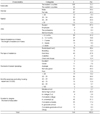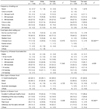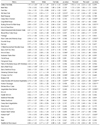Abstract
The purpose of this study was to investigate the Korea-resident foreigners's adaptability and preference to Korean foods. The survey was carried out among 144 foreigners living in Seoul, Korea (male 57, female 87; from the East 109, from the West 35). Based on the first impression of Korean food, 'spicy', 'strong taste of seasoning', 'salty' were most common. About 90 percent of the foreigners adapted to Korean food in six months. It took more time to adapt to Korean food for Western people, compared to people from the East. Factors that influenced their adaption to Korean food were shown to be 'efforts by myself' and 'from friends'. Foreigners posited positive attitude toward Korean food according to their answers like 'nutritionally great food' and 'food with interesting ways of eating'. Westerners appeared to be more satisfied with Korean food. 'Too strong seasoning taste' and 'too sweet' were pointed out for further improvements. Beef Bulgogi, (Korean) fruit, Beef Ribs, Pork Ribs, and Grilled Pork Belly in order were foreigners' favorite foods, but Soju, Korean Sausage, Sliced Rice Cake Soup, Radish Kimchi and Vegetable Side Dishes were not. Taken together, the adaptability and preference to Korean foods to foreigners were different according to the gender and cultural background. Target marketing strategy of Korean Foods should be considered for foreign customers.
Figures and Tables
Table 4
Correlation with length of residence in Korea and period of adaptation on Korean food. Correlation between the length of residence and the period of adaptation to Korean food

References
1. Brich LL. Effect of peer model' food choices and eating behaviors on preschool' food preferences. Child Dev. 1980. 51(2):489–496.
2. Fugita S, O'Brien D. Structural assimilation, ethnic group membership, and political participation among Japanese Americans. Soc Forces. 1985. 63(4):986–995.
3. Han YH. Influential factor on Korean dietary life and eating behaviour of female marriage immigrants. 2010. Hanyang University;MS thesis.
4. Jang MJ, Cho MS. Recognition and preference to Korean traditional food of foreign visitors in Korea. Korean J Diet Cult. 2000. 15(3):215–223.
5. Jang JH. Influence of acculturation and uncertainty avoidance on the dining out behavior of foreigners living in Korea. 2008. Ewha University;MS thesis.
6. Jang BS. A study on dietary life of female marriage immigrants. 2009. Kyung Hee University;MS thesis.
7. Kim DJ. A study on adaptability and preference of Korean food for foreigners in Korea. 2010. Hanyang University;MS thesis.
8. Kim MY. The perception of quick service restaurants and Korean foods by Los Angeles residents. 2007. Sejong University;MS thesis.
9. Kim MH. Foreign students staying in Korea who prefer Korean food. 2008. Sookmyung Women's University;MS thesis.
10. Kim JS. Universalizing Korean food. Korean J Food Cult. 2005. 20(5):499–505.
11. Statistical Yearbook of Seoul (2007): Foreign population. cited 2012 June 10. available from http://stat.seoul.go.kr/jsp/WWS8/WWSDS8123.jsp.
12. Kwak DW. Research to ingestion of food and an attitude from food and drink of multicultural family. 2009. Woosong University;MS thesis.
13. Kweon SY, Yoon SJ. Recognition and preference to Korean traditional food of Chinese at Seoul residence. Korean J Food Cult. 2006. 21(1):17–30.
14. Lee KJ, Cho MS, Lee JM. Content analysis of the New York Times on Korean food from 1980 to 2005. Korean J Food Cult. 2007. 22(2):289–298.
15. Lee KR, Lee JM, Cho MS. A research on swedish university students' perceptions of asian food; focused on Thai, Chinese,Japanese and Korean food. Korean J Food Cult. 2008. 23(3):348–355.
16. Lee YJ. A study on the preference of Korean food and revisiting intention of Japanese tourists. J East Asian Soc Diet Life. 2005. 15(3):247–256.
17. Seo KH, Lee SB, Shin MJ. Research on Korean food preference and the improvement of Korean restaurants for Japanese and Chinese students in Korea. Korean J Food Cookery Sci. 2003. 19(6):715–722.
18. Skinner JD, Carruth BR, Bounds W, Ziegler PJ. Children's food preferences: A longitudinal analysis. J Am Diet Assoc. 2002. 102(1):1638–1647.
19. Yoon HR. A study on recognition and preference of Korean foods for foreigners in different nationality. Korean J Food Cult. 2005. 20(3):367–373.




 PDF
PDF ePub
ePub Citation
Citation Print
Print











 XML Download
XML Download